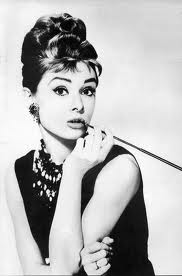Vintage fashion is more than just a trend—it’s a timeless expression of style, history, and individuality. Whether you’re drawn to the elegance of the 1920s, the rock-and-roll vibes of the 1950s, or the bohemian charm of the 1970s, incorporating vintage pieces into your wardrobe can make your style truly unique.
In this guide, we’ll explore everything you need to know about vintage fashion, from shopping tips to styling tricks, so you can master the art of retro dressing with confidence.
1. Understanding Vintage vs. Retro
Before diving into vintage fashion, it’s essential to know the difference between “vintage” and “retro”:
-
Vintage: Authentic clothing and accessories that are at least 20–100 years old. These pieces reflect the styles of their respective eras.
-
Retro: Modern reproductions or inspired designs that mimic vintage aesthetics.
2. How to Find the Best Vintage Pieces
Finding authentic vintage fashion requires patience and a keen eye. Here are some top tips:
-
Thrift Stores & Flea Markets: Great places to discover unique, affordable vintage gems.
-
Specialty Vintage Shops: These curated boutiques offer higher-quality, well-preserved vintage clothing.
-
Online Marketplaces: Websites like Etsy, eBay, and Depop have vast collections of vintage clothing.
-
Estate Sales & Auctions: Ideal for finding rare and high-end vintage pieces.
3. Choosing the Right Era for Your Style
Each decade has its signature fashion trends. Here’s a quick breakdown:
-
1920s: Flapper dresses, beaded embellishments, and art deco patterns.
-
1940s: Feminine silhouettes, A-line skirts, and military-inspired details.
-
1950s: High-waisted skirts, polka dots, and rockabilly style.
-
1970s: Boho dresses, bell-bottoms, and earthy tones.
-
1980s: Bold colors, oversized blazers, and statement accessories.
4. How to Style Vintage Clothing
Wearing vintage fashion doesn’t mean looking like a costume. Here’s how to make it work:
-
Mix Vintage with Modern: Pair a vintage blouse with modern jeans or a vintage dress with contemporary shoes.
-
Tailoring is Key: Vintage sizes can be different from modern sizing, so alterations may be needed for a perfect fit.
-
Accessorize Wisely: Vintage accessories like scarves, hats, and handbags can elevate your outfit.
-
Embrace Layering: Layering vintage pieces with basics can create a balanced, stylish look.
5. Caring for Vintage Clothes
Since vintage fabrics can be delicate, proper care is essential:
-
Read Labels: If available, follow care instructions carefully.
-
Hand Wash When Possible: Many vintage fabrics are too fragile for machine washing.
-
Store Properly: Keep vintage clothes in a cool, dry place, and use padded hangers or acid-free tissue paper.
-
Repair & Restore: Small tears or missing buttons? A tailor can help revive your vintage finds.
6. Confidence is the Key
Vintage fashion is all about self-expression. The best way to rock any vintage look is with confidence. Experiment with different eras, mix and match styles, and make vintage fashion your own.
Final Thoughts
Vintage fashion is a wonderful way to celebrate history while creating a unique, stylish wardrobe. By following these tips, you can embrace vintage fashion effortlessly and make a statement wherever you go.



